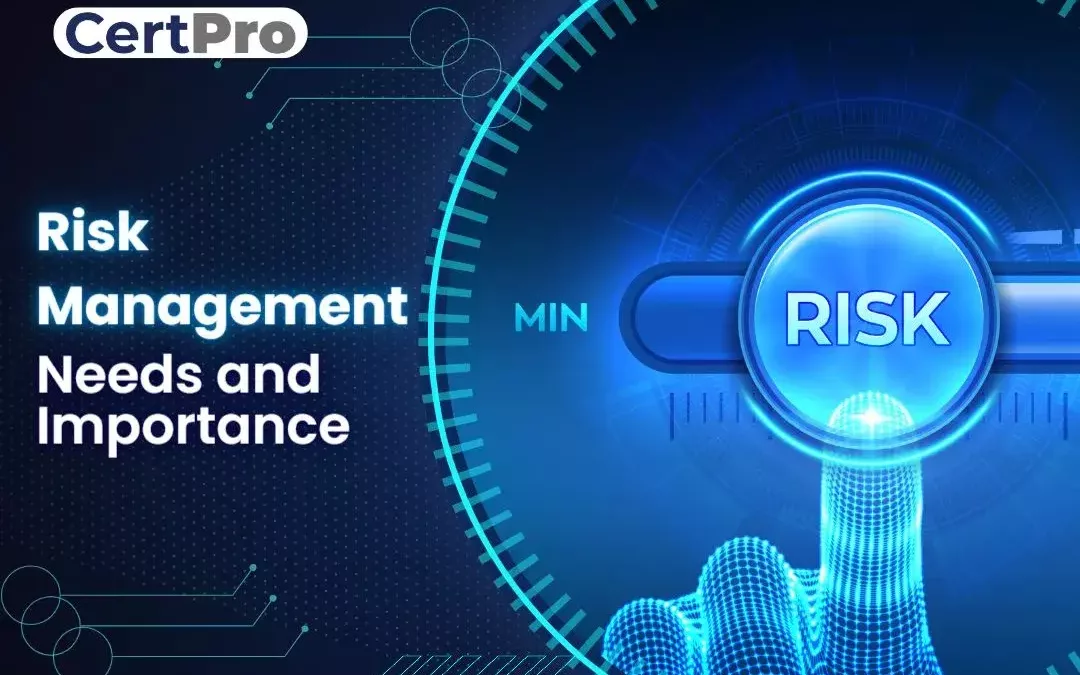Navigating the Complexities: Understanding the Importance of Risk Management
Navigating the Complexities: Understanding the Importance of Risk Management
Blog Article
Checking out the Significance of Risk Management for Effective Decision-Making Approaches
In the elaborate world of service, Risk Management arises as an essential factor in the decision-making process. The ability to determine possible threats and opportunities, and strategize as necessary, can lead to the distinction in between success and failure.
Recognizing the Concept of Risk Management
Risk Management, an important component in decision-making, is often misinterpreted or oversimplified. Risk Management involves regimented and structured strategies, utilizing information and insightful analyses. From economic unpredictabilities, legal liabilities, critical Management errors, to crashes and natural catastrophes, it addresses different threats - importance of risk management.
The Function of Risk Management in Decision-Making Processes
In the world of critical planning and business procedures, Risk Management plays an important function in decision-making processes. Risk Management therefore ends up being a crucial tool in decision-making, helping leaders to make enlightened options based on a detailed understanding of the dangers involved. Risk Management serves as an essential component in the decision-making processes of any type of company.

How Risk Management Improves Strategic Preparation
In the context of calculated preparation, Risk Management plays a pivotal role. Initiating with the recognition of prospective risks, it further encompasses the implementation of Risk mitigation measures. The duty of Risk Management is not static yet dynamic, as it requires continuous monitoring and adjusting of approaches.
Recognizing Possible Risks

Applying Risk Reduction
Having actually established the importance of recognizing possible risks, the next step is to check out Risk mitigation. This process includes establishing and carrying out approaches to take care of determined dangers successfully. It is a crucial facet of strategic preparation as it boosts decision-making by decreasing possible adverse end results. Risk mitigation methods can range from Risk avoidance, Risk transfer, to run the risk of decrease. Each method must be tailored to the specific Risk, considering its possible impact and the company's Risk tolerance. Effective Risk mitigation requires a deep understanding of the Risk landscape and the prospective influence of each Risk. This understanding enables companies to focus on risks and assign resources effectively, ensuring that one of the most considerable threats are resolved first.
Monitoring and Changing Techniques
Though Risk mitigation is an important step in the original source critical planning, find more continuous surveillance and change of these strategies is equally vital. It likewise gives a possibility to review the success of the Risk Management steps, allowing adjustments to be made where necessary, further boosting critical preparation. Monitoring and readjusting Risk Management strategies is a critical component for boosting a company's durability and critical preparation.
Case Studies: Successful Risk Management and Decision-Making
In the world of service and finance, successful Risk Management and decision-making frequently offer as the pillars of prosperous business. These cases highlight the value of astute Risk Management in decision-making processes. These instances underscore the essential function of Risk Management in calculated decision-making.
Devices and Methods for Reliable Risk Management
These tools, such as Risk registers and heat maps, aid in determining and examining prospective dangers. Risk action methods, a crucial part of Risk Management, include accepting, avoiding, transferring, or mitigating risks. With these strategies and devices, decision-makers can browse the complicated landscape of Risk Management, thereby facilitating informed and effective decision-making.
Future Fads in Risk Management and Decision-Making Techniques
As we discover the large landscape of Risk Management, it ends up being noticeable that the tools and methods utilized today will certainly continue to advance. The idea of Risk culture, where every member of a company is mindful and involved in Risk Management, will certainly gain much more prominence. These trends declare an even more aggressive and inclusive strategy in the direction of Risk Management and decision-making.
Conclusion

Risk Management therefore ends up being an important tool in decision-making, aiding leaders to make enlightened options based on a detailed understanding of the dangers included. Risk reduction methods can range from Risk evasion, Risk transfer, to take the chance of decrease (importance of risk management). Effective Risk mitigation requires a deep understanding of the Risk landscape and the prospective impact of each Risk. Risk response approaches, a key part of Risk Management, include accepting, staying clear of, transferring, or mitigating dangers. The concept of Risk culture, where every participant of an organization is conscious and involved in Risk Management, will certainly acquire a lot more prominence
Report this page